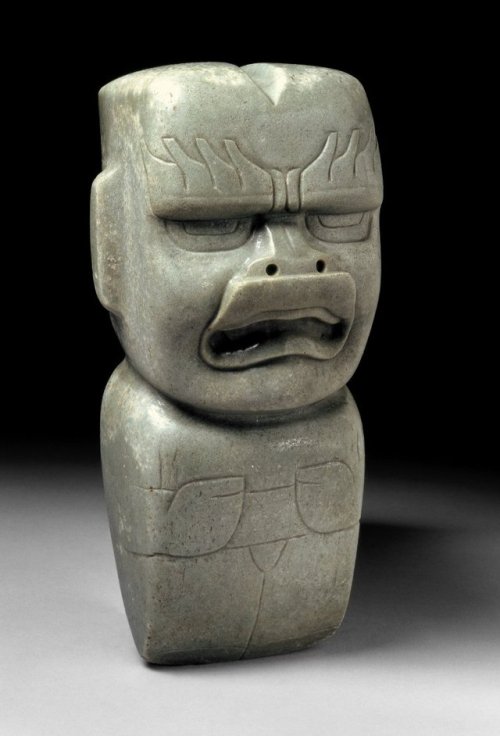mostly-history:Votive axe or celt (Olmec, Mexico), made of aventurine (a type of quartz, usually g
mostly-history: Votive axe or celt (Olmec, Mexico), made of aventurine (a type of quartz, usually green). The figure has a large head and a small, stocky body that narrows into a blade shape. Its mouth is slightly open, with a flaring lip and the corners turned down; it has flaming eyebrows and a cleft in the middle of its head. Hands and a loincloth have been incised on the lower part. It is 29cm high and 13.5cm wide. This axe combines characteristics of the caiman and the jaguar, the most powerful predators of the tropical lowlands. The pronounced cleft in the head, which has been compared to the human fontanelle, imitates the indent found on the skulls of jaguars. Other Olmec sculptures have these clefts, as do imagery in which plant motifs spring from similar cracks and orifices, alluding to the underground sources of fertility and life. The crossed bands glyph, lightly incised on the waistband, represents and entrance or opening. The combination of symbols on the axe proclaims its magic power to cleave open the portals to the underworld. This also reinforces the association of celts with agriculture and maize, as ground stone axes were used for felling forest trees and clearing the ground for planting. Utilitarian objects were often personified in this way to represent the qualities & attributes of supernatural forces. They accumulated inner power, becoming potent objects that were handed down through the generations. -- source link

